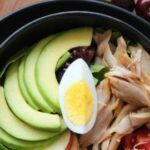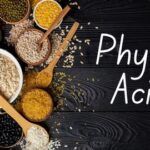Updated on November 5, 2025

We’ve all heard it — “Eat more whole foods.” But what exactly does that mean, and why does it matter so much for our health?
In a world of processed snacks and fast-fix meals, whole foods bring us back to basics — to the way food was meant to be enjoyed: natural, nourishing, and full of goodness. In this post, we’ll look at the top benefits of eating whole foods and how to incorporate whole foods into your everyday meals without making life complicated.
What Are Whole Foods?
Whole foods are ingredients that are as close to their natural state as possible. They haven’t been refined, stripped, or altered with additives, preservatives, or artificial flavourings. Think fruits, vegetables, grains, nuts, seeds, and legumes — simple, honest ingredients that your body knows how to use.
Processed foods, on the other hand, often lose their nutrients during manufacturing. Many contain extra sugar, unhealthy fats, sodium, and artificial ingredients that make them taste good but do little for your health.
Eating more whole foods isn’t about perfection — it’s about balance and making small, consistent changes that add up over time.
Some of the links in this post are affiliate links — if you decide to make a purchase, it helps me keep sharing more food inspiration with you, at no extra cost to you.
A Little History Behind Whole Foods
The idea of eating natural, unprocessed foods isn’t new. It first gained momentum back in the early 1970s, when a few cookbook writers began challenging the rise of convenience and packaged foods — and encouraged people to get back to real, natural ingredients.
For instance, Eleanor Levitt, author of The Wonderful World of Natural Food Cookery, boldly criticised ready-made dinners, cookie mixes, and cold cuts as being full of preservatives and “chemical poisons”.
Around the same time, Jean Hewitt, a food writer and home economist, published The New York Times Natural Foods Cookbook, which promoted cooking with wholesome, fresh ingredients — the kind of meals our grandmothers used to make from scratch.
These early authors helped spark the natural foods movement, inspiring generations to choose food in its purest form.
🛒 You can still find these classics on Amazon if you’re curious to see how it all began:
Fast forward to today, and the message still rings true — just with a fresher, modern touch. Contemporary advocates like Heidi Swanson, with her cookbook Super Natural Every Day, and John Mackey, co-founder of Whole Foods Market and author of The Whole Foods Cookbook, continue to champion real, minimally processed foods. Their books bring the philosophy of whole foods into today’s kitchens — simple, vibrant, and full of flavour.
🛒 You can check out these books on Amazon:

The Top Benefits of Eating Whole Foods
Processed foods, no matter how “healthy” they claim to be can never compare to whole foods that are as close to their natural form as possible.
Here are 5 top benefits of eating whole foods, or as I like to call them — real, natural foods your body will thank you for.
1. Loaded with Nutrients
When you eat food in its natural, unrefined state, you’re getting the maximum nutrients straight from the source.
Take a simple example: a fresh apple versus apple juice or apple sauce. The whole apple gives you fibre, vitamins, and antioxidants — but the processed versions lose much of that goodness during production.
In food processing, even basic steps like blanching can cause nutrient loss through leaching. Milling and extrusion (common in food manufacturing) can strip away minerals and vitamins, reducing a food’s nutritional value.
In short, the more a food is processed, the fewer nutrients remain. Whole foods, however, retain the vitamins and minerals your body needs to work properly — in their purest, most natural form.
2. High in Healthy Fats
Not all fats are bad!
Processed or trans fats, often found in vegetable oils, margarine, and spreads are the ones to avoid. In contrast, naturally occurring fats in whole foods are beneficial.
Replacing bad fats with healthy ones can help reduce the risk of heart disease and support overall health. For example, extra virgin olive oil is rich in oleic acid, a type of monounsaturated fat known to promote heart health. (1)
Other great sources of healthy fats include avocados, nuts, and seeds — all of which make a delicious addition to your muesli, salad, or morning toast.
3. Rich in Antioxidants
Antioxidants are your body’s natural defence system. They fight free radicals that damage cells and contribute to chronic diseases like heart disease and certain cancers.
Whole foods, especially fresh fruits and vegetables, are naturally rich in antioxidants. Even unprocessed animal foods contain them (though in smaller amounts). For instance, eggs contain lutein and zeaxanthin — two antioxidants linked to eye and heart health. These nutrients help protect your body from oxidative stress and inflammation that build up over time. (1)
4. Good Source of Fibre
Fibre does more than just keep your digestion running smoothly. It also helps control your weight, supports gut health, and reduces the risk of type 2 diabetes. (1, 2, 3)
When you get fibre from whole foods (instead of supplements), you also benefit from the added nutrients found in fruits, vegetables, whole grains, nuts, and seeds. Plus, fibre keeps you fuller for longer, reducing unnecessary snacking.
5. Naturally Low in Sugar
Whole foods may be rich in nutrients, fibre, and healthy fats but they’re naturally low in sugar. And that’s a good thing!
This doesn’t mean that all natural sugars are automatically healthy. For example, fruits like bananas, grapes, and cherries, or vegetables like carrots and beets, still contain natural sugars but unlike refined sugars, they come with fibre, vitamins, and minerals that slow down digestion and prevent sugar spikes.
Here’s a simple comparison:
Adding a spoonful of sugar to your oatmeal gives you quick energy but may turn to fat if unused. In contrast, topping your oats with sliced banana provides sweetness plus nutrients that your body can use efficiently. So, yes — the sugar in whole foods is far better than refined ones, but moderation is still key.
👉 You may like to read this: Dried cranberries have health benefits although high in sugar — only eating too much is bad for you.

How to Incorporate Whole Foods into Your Diet
Eating more whole foods doesn’t have to mean a complete kitchen overhaul. It’s really about making small, mindful changes — one meal, one snack at a time. Even little swaps can add up to big health improvements over time.
Here are a few easy ways to start:
1. Begin with Breakfast
Replace sugary cereals or packaged pastries with something wholesome. Rolled oats, muesli, or granola made from real ingredients are great options — quick to prepare and naturally satisfying. You can top them with fresh fruit or a spoonful of yoghurt for added nutrients.
👉 Need ideas? Read my post on how to build a healthy breakfast that keeps you full till lunch.
2. Build Balanced Meals
Fill half your plate with colourful vegetables, add a source of lean protein (like fish, chicken, or tofu), and round it off with whole grains such as brown rice, quinoa, or barley. You’ll feel fuller, longer and your energy will stay steady through the day.
3. Snack Smarter
Keep nuts, seeds, or fruit within reach instead of reaching for processed chips or biscuits. They’re nutrient-dense, easy to pack, and perfect for mid-day cravings.
👉 You might also like my guide on how to make a healthy trail mix you’ll actually love.
4. Stay Hydrated Naturally
Sometimes we mistake thirst for hunger. Drink more water, or infuse it with lemon, cucumber, or mint for flavour — no added sugar required.
5. Choose Minimally Processed Foods.
When shopping, look at the ingredient list. If it’s short and you can recognise every word, it’s likely closer to whole food.
Remember — the goal isn’t perfection. It’s about progress. Every time you choose a natural, whole ingredient over a processed one, you’re nourishing your body the way it was meant to be.
If you’re looking for wholesome breakfast ideas, Oatz N More’s muesli mixes and granola clusters make an easy start — baked fresh, with no preservatives or fillers.
Whole-Foods Checklist (Easy, Everyday Staples)
If you want one quick reference to shop from or stock in your pantry, here it is — a simple whole-foods checklist you can use any time you cook or plan meals. These are the ingredients I reach for most weeks:
- Vegetables: Asparagus, bell peppers, broccoli, Brussels sprouts, carrots, cauliflower, celery, cucumber, eggplant, kale, spinach, Swiss chard.
- Legumes: Black beans, green beans, chickpeas, lentils, kidney beans.
- Fruits: Apples, avocado, bananas, blueberries, grapes, grapefruit, kiwi, lemon, oranges.
- Nuts & seeds: Almonds, walnuts, pumpkin seeds, sunflower seeds, chia seeds.
- Whole grains: Rolled oats, brown rice, barley, quinoa.
- Protein & animal foods: Eggs, lean chicken, lean beef, salmon or other fatty fish, fresh or frozen seafood.
- Dairy & fermented foods: Plain yoghurt, kefir, cheese (preferably minimally processed).
- Pantry basics & healthy fats: Extra-virgin olive oil, avocado oil, natural nut butters, canned beans (low salt), tin tuna or salmon.
- Snacking & convenience whole-food options: Plain popcorn, plain rice cakes, roasted chickpeas, plain nut mixes (no added sugar).
Quick tips for using the checklist:
• Keep a small selection of these staples on hand so healthy choices are the easy ones.
• Pick two vegetables, one grain, one protein and one flavour item (herb, spice, lemon) to build simple meals.
• When buying packaged items, look for short ingredient lists — fewer ingredients usually means less processing.

Now, Give These a Try
Looking for pantry staples, cooking inspiration, or a little kitchen upgrade to make whole-foods eating easier and more enjoyable? Here are some top picks — each one supports the practical tips shared above.
🛒 For US Readers
As an Amazon Associate, I earn a small commission from qualifying purchases — at no extra cost to you. Thank you for supporting my blog! Read about the Affiliate Disclosure here.
- Bob’s Red Mill Organic Old Fashioned Rolled Oats – A versatile, whole-grain base for breakfasts, overnight oats or baking — a staple for wholesome eating.
- Viva Naturals Organic Chia Seeds – Tiny but mighty: these support healthy fats, fibre and add texture to your bowls, smoothies or muesli mixes.
- NOW Foods Real Food Raw Pumpkin Seeds – A nut-and-seed snack option rich in zinc and minerals — handy for your snack ideas or topping your meals.
- Glass Storage Jars with Bamboo Lids – Proper storage helps preserve freshness and flavour of your whole-food staples, making it easier to eat well consistently.
🇲🇾 For My Fellow Malaysians
You’ll also find similar items via Shopee:
- Rolled oats, chia-seeds, pumpkin seeds — look for “plain / no additives” labels.
- Airtight glass jars or storage containers help you keep your nuts, seeds and grains fresh.
In a Nutshell
Mother Nature has given us everything we need — the air we breathe, the water we drink, and the foods that nourish and heal us.
So why aren’t we eating enough natural whole foods that truly support our health?
In today’s fast-paced world, convenience often wins. It’s easier to grab something quick than to prepare a wholesome meal from scratch.
But here’s the thing — with the rise in lifestyle-related diseases, more people are beginning to look closely at what they eat. Food producers have responded by offering “better-for-you” options, but even then, these are still processed in some way.
That’s why it’s important not to rely solely on packaged “healthy” foods. No matter how convincing the label sounds, they can’t compare to whole foods in their natural form. When you eat whole foods, you’re giving your body nutrients the way nature intended — unrefined, balanced, and full of life. Now that you know the top benefits of eating whole foods and how to incorporate them into your daily routine, making healthier choices will come naturally.
At a Glance
| EAT THIS | NOT THAT |
| Fruits and vegetables | Ready-to-eat or convenience foods |
| Meat, poultry and seafood | Refined carbohydrates |
| Milk and some dairy products | Foods with “natural” or artificial flavourings |
| Nuts, seeds and beans | Foods with added or refined sugar |
| Minimally processed foods | Heavily processed foods |
What do you think — are these easy to follow? I believe it’s doable!
Tell me in the comments below — would it be hard for you to switch to whole foods, or are you already making the change? If you found this article helpful, please share it with someone who could use a little nudge toward healthier eating. Just click the SHARE button — small changes can inspire big results!
Thanks for reading and happy shopping!
Recent Posts You May Be Interested Reading
- How To Strengthen Your Immune System Naturally: Foods, Habits & Everyday Tips

- Sesame Seeds: Nutrition, Benefits, And How To Incorporate Them In Your Diet

- Bloated After Eating Healthy? Here’s What’s Really Going On

- 13 Silent Signs Of Inflammation You Shouldn’t Ignore And How To Reduce It Fast

- 15 High-Protein Breakfast Ideas To Power Your Morning

- What Is Phytic Acid, and Should You Worry About It in Oats?

Disclosure: This blog post contains affiliate links as part of the Amazon.com Services LLC Associate Programs and other affiliate services. This means that oatznmore.com receives a small commission by linking to amazon.com and other sites at no extra cost to the readers.
Medical Disclaimer: I am not a doctor or medical professional, and this post should not be taken as medical advice. Please do your own research. The material on this blog is provided for informational purposes only. It is general information that may not apply to you as an individual and is not a substitute for your own doctor’s medical care or advice.

I love to cook at home and I must say I try to avoid any food that comes in a box ready to eat, as I’m looking for make more changes on my diet to be healthier, I was looking for learn more about why should we eat whole foods, and I’m glad I found your article today as it helped me to learn more about what are whole foods and how to add them in my diet. I’m sure your article will help many to make healthy changes on their diets.
You’re definitely on the right path to a healthier diet, Alejandra. Glad this article is of further help to what you’ve been practising. I believe making changes in smaller steps day by day would bring better results than a sudden change. At least, one would not feel overwhelmed without the convenience of ready to eat food.
I knew that eating whole foods is a healthier choice than consuming processed foods but I learned so much reading your article about all the benefits whole foods actually provide!! It is so important indeed to eat enough whole natural foods now that it is a fact that most processed foods are cancerous & full of additives, preservatives and sugar. Thank you, that was very helpful !
Thanks for reading and commenting.
To stay in good health, healthy eating habits is a must. Avoiding processed food and choosing whole foods is a good start.
This post beautifully captures why I’ve chosen to stick with whole foods over anything refined or packaged. For me, it started as a way to feel better physically, but over time it’s become a deeper lifestyle shift; one that connects me to the food I eat and the way it’s grown. I’ve noticed such a difference in my energy and digestion since making simple swaps like fresh fruit instead of juice, or homemade granola instead of boxed cereal.
I especially appreciated the historical context you shared. I didn’t realize how far back the natural foods movement goes. It’s empowering to know we’re part of a long tradition of people choosing nourishment over convenience. Your tips for incorporating whole foods are practical and encouraging, especially the reminder that it’s about progress, not perfection. That mindset makes the journey feel sustainable.
Thanks for writing this with such clarity and warmth; it’s the kind of post that makes me feel seen and supported in my choices.
Thank you so much, Alice. Your comment truly made my day. I love hearing how embracing whole foods has become such a meaningful part of your lifestyle. That deeper connection you mentioned is exactly what makes the journey so rewarding. I’m glad the post reflected that and that the reminder about “progress, not perfection” struck a chord. Thanks for sharing your experience It adds so much heart to the conversation!
Good Stuff here, I like how you break it down into simple steps that anyone can follow. The pantry checklist especially makes it practical for everyday life, and I’ve noticed that once you start eating more whole foods, even your energy and focus feel different. What’s one whole-food swap you’d recommend for someone short on time during busy mornings?
Hi Jason,
I’m glad you found the post helpful and you’re absolutely right. That shift in energy and focus really does kick in once you start eating more whole foods! For busy mornings, I’d say overnight oats are one of the easiest swaps. It’s quick to prep, nourishing, and you can mix in fruits, nuts, or seeds for variety.